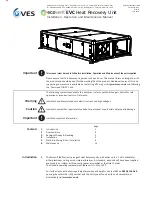
15
ENGLISH
TR 50mc REMOTE CONTROL PULSING UNIT
Since a pre-set amperage is not always ideal for the entire
duration of a welding task, pulsating welding current is often used.
For example, when welding pipes in cramped conditions, a
change in amperage is often necessary. Should temperatures rise
too high, there is a danger that liquid metal will begin to drop from
the welding pool. Too low, and the workpiece material will not melt
sufficiently.
Function:
A relatively low welding current
(background current I
2
)
rises via a steep up-slope to a considerably higher value
(pulse
current I
1
)
and drops again after a pre-set period
(Duty-Cycle)
to
the basic setting
(background current I
2
)
, a process which repeats
itself over and over again. This is only possible when a specially
designed current source is used.
During the welding process, small sections of the weld zone melt
and solidify quickly. Welding a seam using this method is thus
considerably easier to control than if a large welding pool were to
from. This technique is also used when welding thin sheet metal.
Each fusion point overlaps the next, thus forming a neat and
regular seam. When the TIG pulsing technique is used when
welding by hand, the welding rod is applied at each current peak.
(Only possible in the lowest frequency range, i.e. 0,25 - 5 Hz)
.
Higher pulse frequencies are generally used in automatic welding
applications and serve mainly to stabilize the welding arc.
With the standard TR 50mc remote control pulsing unit two
operational modes are possible:
1. Regulation of impulse current I
1
by MANUAL operation of the
TR 50mc remote control unit.
(INT.)
2. Adjustment of impulse current I
1
by means of the TR 52mc
remote control pedal unit.
PULSING CURRENT DIAL I
1
(main current)
For continuous adjustment of the pulsing / main current in the
3 to 200 A range
PULSE FREQUENCY DIAL f
(Hz)
For continuous adjustment of the pulse frequency, depending
on which frequency range has been preselected by switch .
BACKGROUND CURRENT DIAL I
2
The setting for the background current is made as a percent-
age of the value set for the pulsing current I
1
FREQUENCY RANGE SWITCH
Description of operating mode --> MANUAL regulation of
pulse current I
1
Connecting the remote control unit:
- Link the connecting socket on the power source and the
remote-control unit socket electrically with the remote con-
trol cable.
- Plug in the plug-in connections the right way round, and screw
the coupling ring on as far as possible.
Functional description:
- Functional sequence possible in 2-step and 4-step operating
mode
- LED indicator blinks up on the power source
- Set desired operating mode with function selector switch
- The appropriate LED-indicator , , or lights up
- Pre-select the frequency range
(0.2 - 2Hz, 2 - 20Hz, 20 - 200Hz,
200 - 2000Hz)
with the range switch .
- The pulsing current I
1
is set continuously
(between "Min." and
"Max.")
with setting dial .
- The setting for the background current I
2
is made as a percen-
tage of the pulsing current I
1
, with setting dial
- To select the duty cycle
(= the relationship of pulsing current I
1
to background current I
2
in %, the frequency remaining con-
stant)
, use dial
- Set the pulse frequency dial to the desired value.
- The mean welding-current amperage is indicated on display A
- The downslope parameter is set directly on the power source.
In the 4-step operating mode, the pulse phase begins as soon
as the operator releases the torch trigger in the up-slope. As
can be seen in Fig. 16, pulsing also takes place in the down-
slope.
Fig.14
DUTY CYCLE DIAL
(%)
(Setting dial for pulse / interval relationship)
This dial is for setting the relationship, in percentage terms,
between the pulsing current phase and the background current
phase.
Setting-example 1
Duty cycle dial is in scale position 10,
i.e. short pulsing current phase of 10 %, and long background
current phase of 90 % - means low degree of heat impact.
(Assuming that certain welding parameters are set)
.
Setting-example 2
(Fig. 15)
Duty cycle dial is in scale position 50,
i.e. pulsing current phase and background current phase are
equally long
(each 50 %)
- means medium degree of heat
impact.
(Assuming no change in the welding parameters that are set)
.
Setting-example 3
Duty cycle dial is in scale position 90,
i.e. long pulsing current phase of 90 %, and short background
current phase of 10 % - means high degree of heat impact.
(Assuming no change in the welding parameters that are set)
.
Fig. 15
I
t
I
1
f
(Hz)
I
2
50%
50%
Duty-Cycle
Summary of Contents for MAGIC WAVE 2000 FUZZY
Page 2: ...2...
Page 25: ...1 ENGLISH OPERATING INSTRUCTIONS...
Page 26: ...2...
Page 49: ...1 FRAN AIS MODE D EMPLOI...
Page 50: ...2...
Page 73: ...ERSATZTEILLISTE SPARE PARTS LIST LISTE DE PI CES DE RECHANGE ud_fr_st_tb_00150 012000...















































